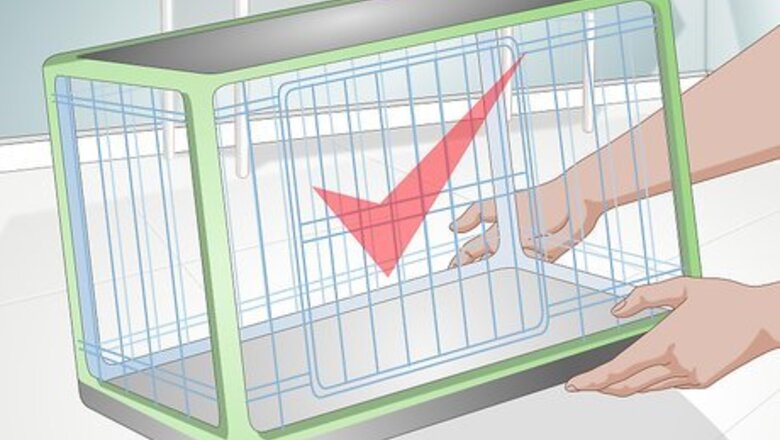
views
X
Research source
Get a crate of an appropriate size.
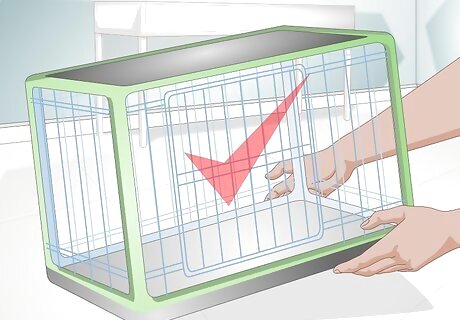
Your puppy should be able to stand up, lay down, and turn around in their crate. It's best not to give puppies extra space because they're liable to do their business in one corner of the crate instead of asking to go outside. Crates often range in size from 18" x 12" x 14" for small breeds all the way up to 48" x 30" x 33" for large or giant breeds. For maximum convenience, get a crate that's the right size for your full-grown dog and insert a temporary physical divider into it to create a smaller space for your puppy. Move the divider back as your puppy grows. Both crates and dividers are available at most pet stores.
Get your puppy to go into the crate on their own.
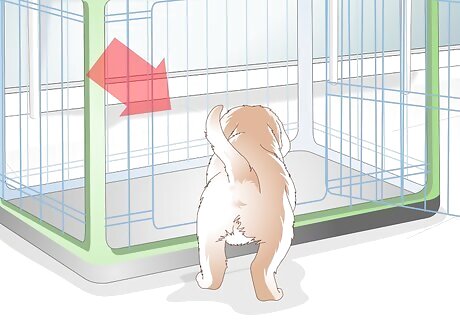
Before you train your puppy to sleep in their crate, it's important to familiarize them with it and establish it as a positive place. Introduce your young pet to their new crate by putting it in a social space, like your living room, with the door open. Drop treats and/or toys into the crate to encourage your dog to explore inside it. You want your puppy to think that going inside the crate is their idea, so don't force them in it. Let them explore it at their own pace while you praise them in a happy voice.
Feed your puppy meals in their crate.
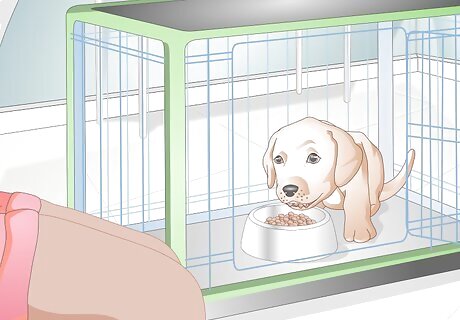
The fastest way to get your dog used to their crate is to relocate their meals to the inside of it. Feeding them in their crate helps establish it as a safe, happy place. If your puppy is wary of going into the crate at first, start by feeding them just outside the crate. Then, put their dish right by the door so that they're eating with their head inside the crate. Keep moving the food bowl further and further back with each mealtime until their entire body is inside. Once your dog is comfortable feeding in the crate, close the door while they eat and let them out immediately afterwards. Then, gradually extend the time they are in the crate with the door closed after eating from a few minutes to a quarter of an hour. This will help them become comfortable with being confined in their crate.
Play crate games with them.
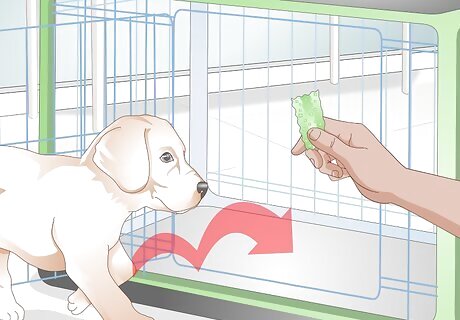
Playing crate games teaches your puppy to stay in their crate while associating staying in it with positive rewards. Start by leading your pet inside their crate and closing the door without latching it. Have a handful of treats in one hand and hold the door with the other. Now, open the door with one hand while feeding your dog treats through the side of the crate with the other. If they stay in their crate, they get the treats. If they try to run out, quickly close the door before they can and start again. Once they have this routine down, it's a good thing to do each morning when you're letting them out of the crate since it rewards them for staying in the crate during the night and teaches them to wait for your command to leave the crate. Playing this crate game will give your dog positive associations with their crate. It will also teach your pup that they have choices. Their good behavior and decisions will result in a reward while their bad behavior and decisions will lead to restrictions.
Give them a cushy surface to sleep on in the crate.
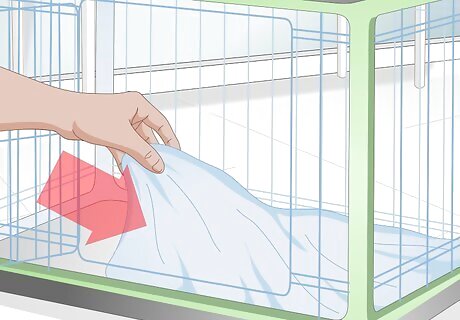
This could be a dog bed or a pad, a blanket or old comforter. Just be sure that it's comfortable and appropriate bedding for the weather. For instance, it's probably not a good idea to drown your puppy in wooly fleece if it's in the middle of the summer. It can also be comforting to put a hot water bottle in their bed. Besides keeping them warm, it approximates the feel of having another body to sleep next to.
Put their favorite toys and treats in their crate.
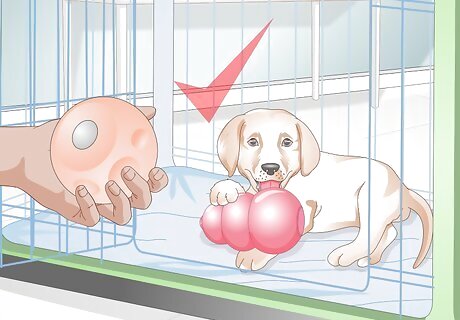
Doing so will help your puppy feel secure and give them positive associations with their bed. It also gives them something to do besides whine if they can't get to sleep or are up earlier than you. If your puppy is teething, be sure to put a chew toy in their crate. Playing with a chew toy can be a wonderful calming activity if your puppy is feeling anxious about sleeping alone.
Position the crate near to you at first.
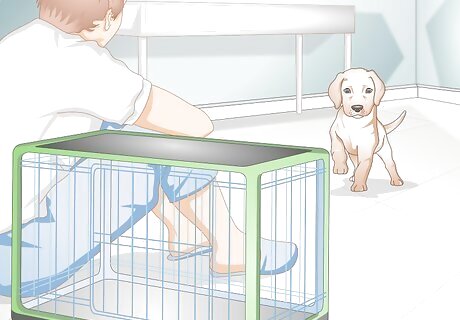
Since your puppy is bound to feel a lot of separation anxiety at first, it's a good idea to put their latched crate inside your bedroom or just outside the door for the first few nights. It's tempting to put them far away from you where you won't hear their whining, but this will only make the transition harder for your puppy. They're far more likely to settle down if they're somewhere where they can see you. You can gradually move your puppy's crate further away if you prefer them to sleep elsewhere in the house. However, it's a good idea to keep your puppy within earshot until you know that they can make it through the night without having to go to the bathroom.
Wear your puppy out before bedtime.
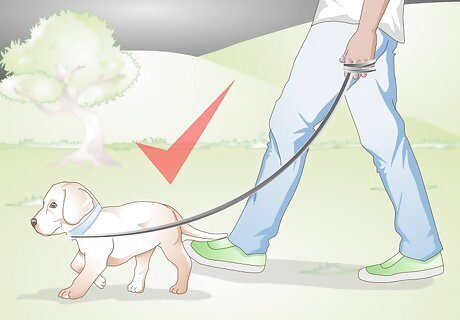
Your pet is much more likely to fall asleep without complaint if they have had sufficient exercise during the day. Taking them out for a good evening walk will help them settle down later. Avoid, however, revving your puppy up with energetic play (like fetch or tug) immediately before bed. Give them a half hour to wind down before you bring them to their crate.
Ignore their pre-sleep whining.
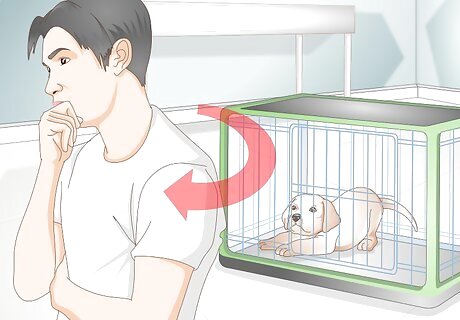
It's very likely that your puppy will whine when you first close the door of their crate. They might continue for a long time while you try to go to sleep. Even though they're impossible to tune out, it's important that you do not respond to their cries. If you respond to their cries, you are teaching them that whining behavior will get them what they want. This can lead to serious issues down the road, not just with their sleeping. Do not punish your puppy for whining. If you scold your puppy, you are still teaching them that whining will get a response from you. You do not want to give them any response. Puppies learn from consistency. Resist any urges to “make exceptions” for one night. Wear ear plugs, close the door, or turn on white noise to help you ignore the puppy.
Take them out to potty when they need to go.
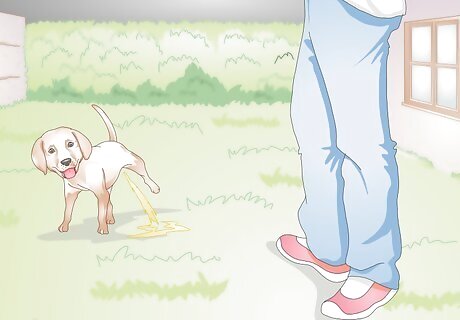
No dog likes to pee where they sleep, and puppies have very small bladders. If your puppy starts suddenly whining in the middle of the night, they likely have to be let out for a bathroom break. Take your puppy out for a 3-4 minute walk and then put them back in their crate and close the door. Puppies are generally not able to “hold it” through a full night until they reach four or more months of age. Take your puppy out right before bed. Puppies need to go to the bathroom a lot, so it's important to be sure that they've urinated and defecated before you tuck them in at night.


















Comments
0 comment